Today, for the decoration of the window opening and the protection of the room from scoring sunlight, unauthorized views, various curtains options can be used. Not only traditional options are popular, but also blinds that are not moving on the parties, but rise upstairs. They are distinguished by aesthetic and attractiveness. You can come up with a variety of finishes of the curtains, the blinds do not make it easy to sew the blinds.
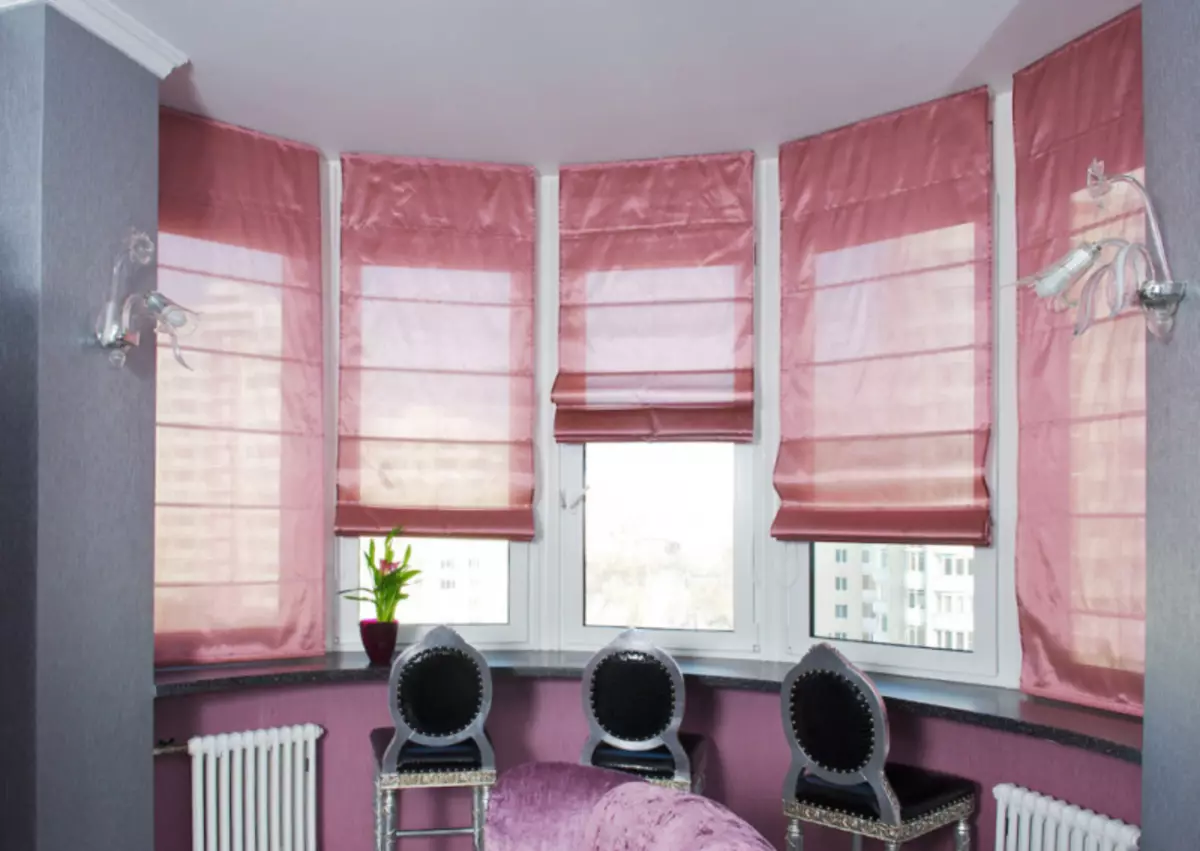
Roman curtains look much attractive plastic and allow you to use for decoding tissue of any color and texture.
You can use not only tissue for sewing, but also a dense beautiful paper. For homemade manufacturer, the so-called Roman blinds are more often used, which differ not only by simplicity of sewing, but also by external attractiveness, grace. The design of such curtains can be different, ranging from simple direct web and ending with unusual forms that are decorated with brushes, embroidery, appliqués. Often for the Roman curtains applies not one color fabric, and two. One is used for the facial part, and the other is for lining.
Preparation Blind Options
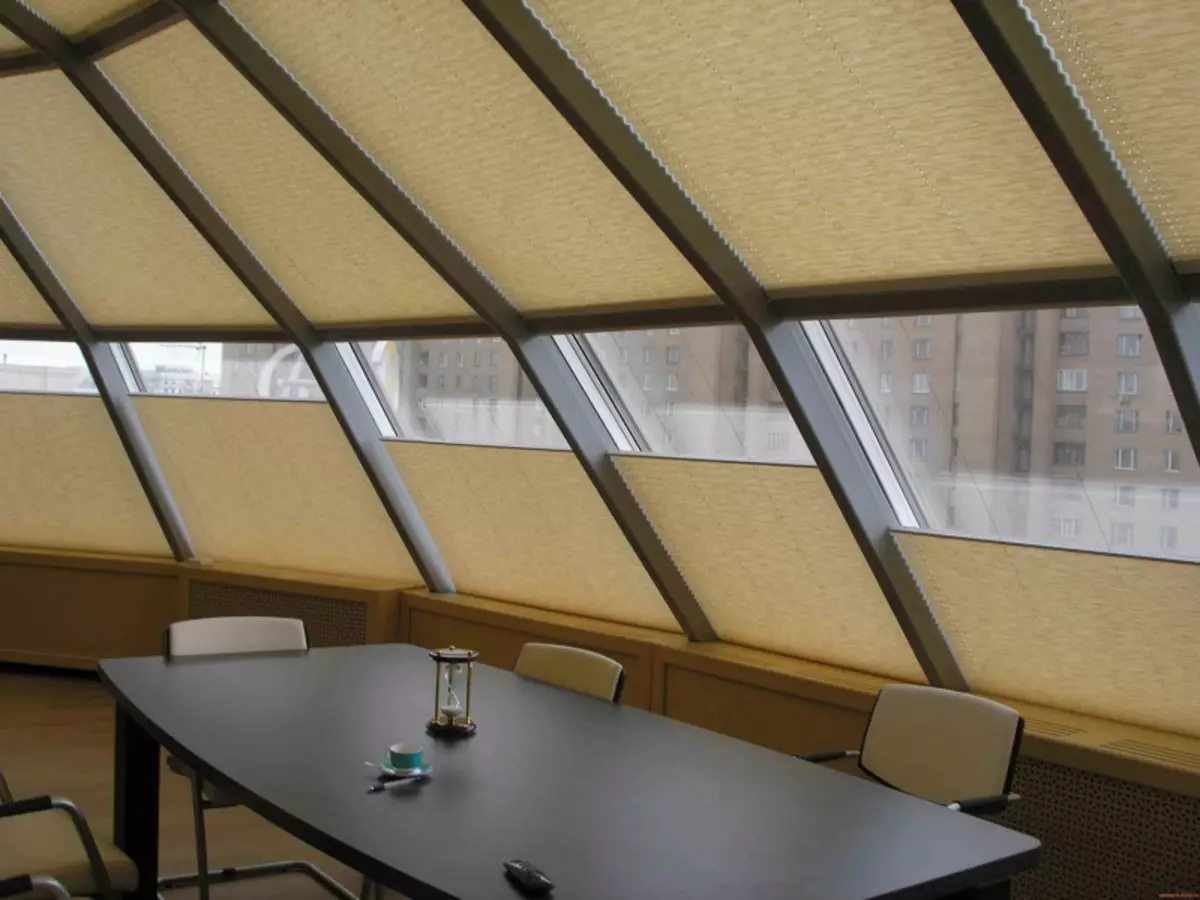
Using the curtain Plisse, it is possible to easily place the windows of any non-standard form.
Horizontal, or Venetian, blinds are the traditional and most familiar look of this variety of curtains. They are thin, often plastic or aluminum strips that not only change their position, but can also rise or descend. Today, wooden horizontal blinds made from bamboo, transparent plexiglas are popular. Vertical blinds are used for living rooms and offices, bedrooms and children's. They are more resistant to harsh wind gusts, aesthetic and neat. It consists of vertical tissue lamellae, which can rotate around their axis, adjusting the level of lighting.
If necessary, such a curtain is completely shifted to the side, a special mechanism is used to adjust the motion and position of the lamellae. It allows you to send light not only to the room, but also up or down, on the floor. If desired, light overlap. Plistes received their name because of the fact that the canvas has many corrugated folds. These are horizontal curtains that are easy to make it yourself even from a piece of wallpaper or translucent decorative paper. There are many configurations of such curtains, it can be used for the entire window opening or close only individual sash. This makes it possible to apply various color materials, create an unusual and pleasant mood.
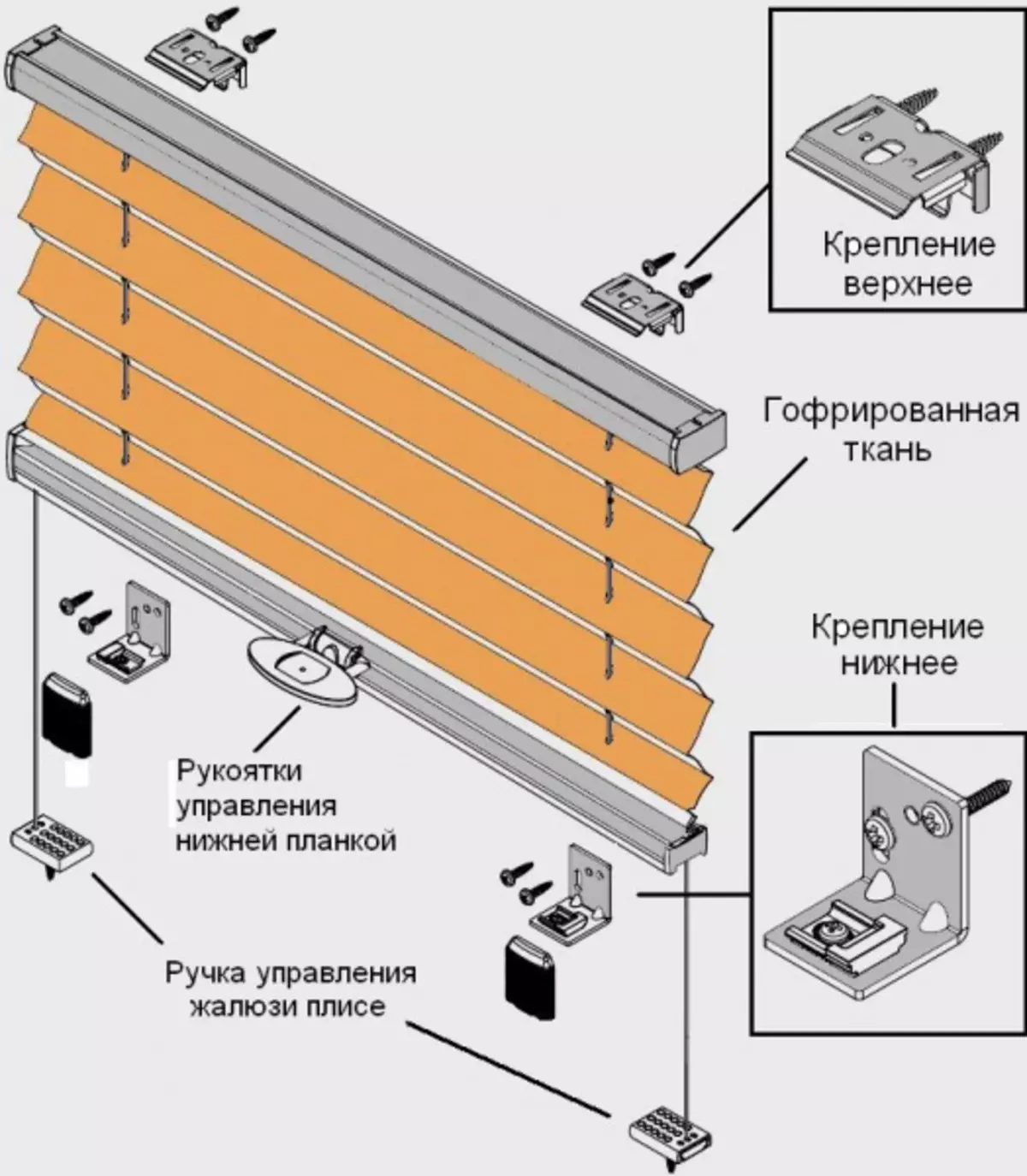
Even old wallpaper or any corrugated tank can be served by material for the curtains of Plisse.
Article on the topic: How to independently make the floor in the gazebo
With the help of a special mechanism, the blinds can be completely disclosed, making light in the room more muted, or to open, leaving a place for the stream of natural daylight lighting. Plissa is the best option if you need to design the windows of an unusual form, for example in the form of a circle, trapezium.
Japanese blinds blinds differ from the rest. These are separate panels that move on a multi-layer guide, reinforced in the cornily. The web is wide, they only move in the same plane, do not turn around their axis . Typically, the cornice includes only 3-6 wide bands, each of which can be made from the tissue of different shade and pattern. This allows you to create an unusually beautiful interior that will give the room the features of sophistication and refinement. The width of one panel is usually 50-150 cm, fabrics of different types and quality are used for the manufacture, at the bottom of each panel there are special weighting linings.
Shutters Screen and String
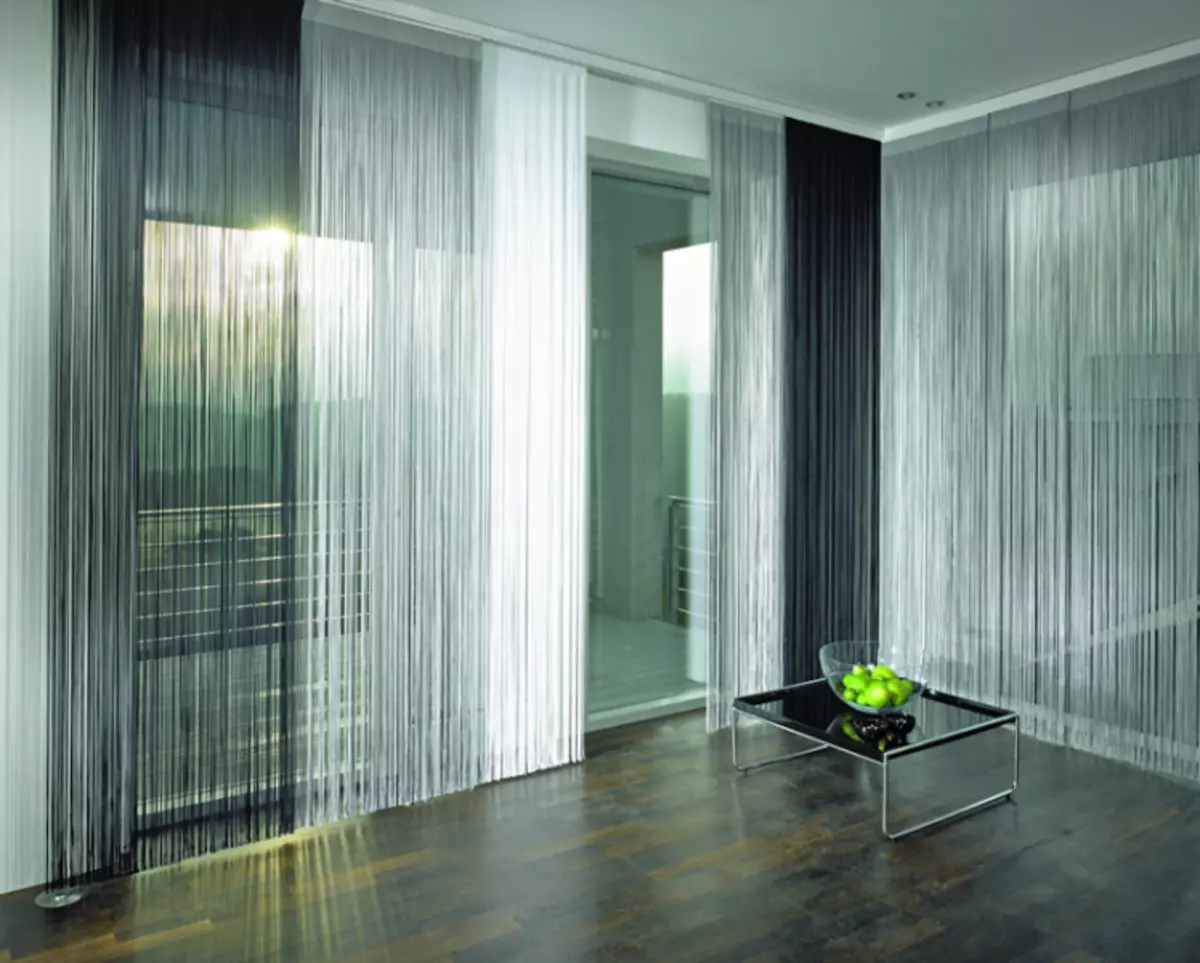
The filament curtains can also be used to distinguish the room space and in the doorways.
Screen blinds are rolled curtains made of translucent or opaque polymer fabric. Most often they are used for offices, kitchens, living rooms. Different with strict lines, minimalism. The base is usually fiberglass, it allows you to evenly distribute the light, muffle it, make it more pleasant. A part of the thermal radiation is scattered, the room comes in the room even on a very hot day. String curtains are also called "rain" or "breeze". This is an elegant filamentous canvas, which is made up of thin ropes or threads.
The difference between such a system of blinds from others is that there is no connecting chain at the bottom, the plumbing does not apply, the curtain is located free. All threads are going to separate lamellas that are attached to the eaves. The length of the thread may be different, usually it reaches the floor. Management is carried out exactly as the conventional blinds blinds. There is a mechanism for turning the lamellas around its axis. To control the chain or bar is applied, on the side. Such curtains are very attractive, they can be used not only for windows, but also for interior transitions. Thes of them are that they are perfectly skipping fresh air, making lighting softer, not so bright and blinding.
Materials for the Roman Curtains
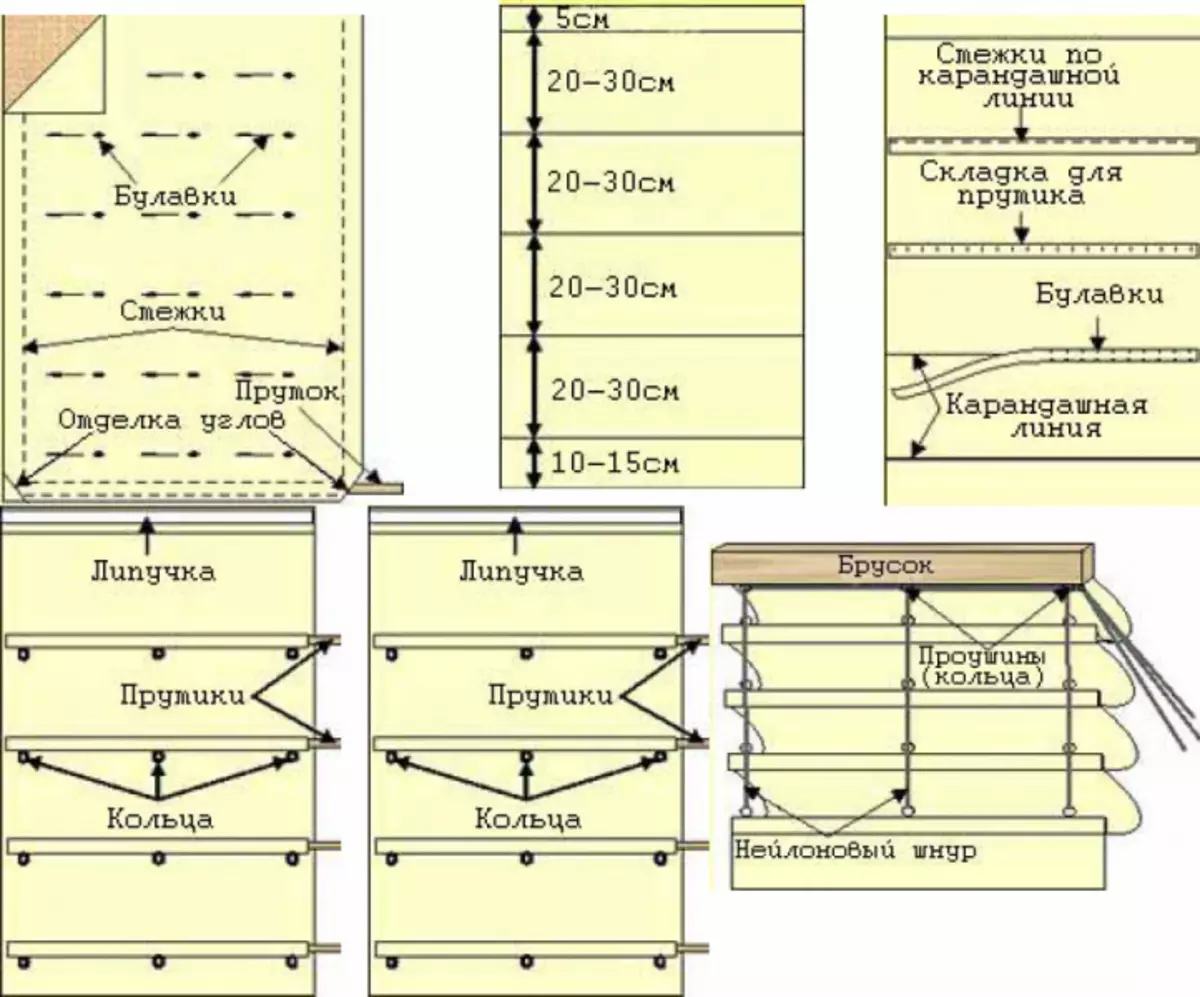
Stages of creating a Roman curtains.
To sew Roman blinds, it is necessary to prepare such materials and tools:
- The fabric of two types, one of which is necessary for the front side, and the second - for the lining, i.e. the wrong side of the curtains;
- Wooden thin rails that are used for folds; Roman blinds must be draped correctly, for which the rails placed in pockets are applied;
- Wooden rails that will be used for the top edge of the curtains and for the lower, the parameters of such plates: 2.5 * 0.3 cm and 2.5 * 1.7 cm;
- Decorative cord lifting cord; You can use the usual nylon cord, but if the Roman blinds on the surface will have a beautiful pattern or ornament, the cord can be selected ornamental;
- Rings for cords, hooks that are mounted on the cornily;
- Velcro tape for fastening curtains;
- Special eaves, which is used to hang the Roman blinds (it can be bought in any construction store).
Article on the topic: Ultrasonic bath do it yourself: for what is needed
To sew such curtains with their own hands, you need to carefully approach the choice of materials. The fabric should be dense, but not too tough, it should be perfectly to keep folds. For the front side, it is best to select a beautiful canvas that has an ornament or pattern, and for the wrong one is allowed to use a one-photon, which may have a contrasting tint. If the curtains are used for the living room or kitchen, the fabric can be taken easier and even translucent, but for the bedroom you can choose and more dense. For bathrooms it is recommended to choose the web, which are not afraid of water, there should be no divorces and spots on their surface.
Sewing of the Roman curtains
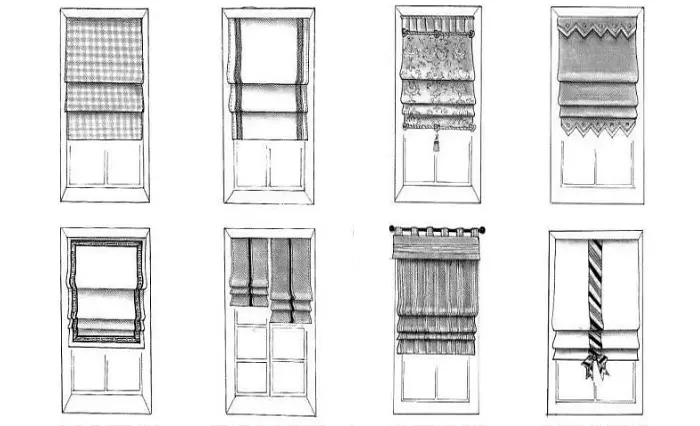
Various finishes of Roman curtains.
Roman blinds start sewing with cloth cutting. For this, it is pre-determined by the size of the future design, the width and height of the window are measured, count the amount, the size of the folds for the canvas. Add 5 cm for each edge to the bending, in length - 21.5 cm. When the main facial canvas is ready, it is necessary to cut the lining, the dimensions are observed exactly the same. The main fabric face down stacked on the table, on the edges are made of pods by 5 cm, they are moved, after which corners are wrapped, the procedure is repeated. The result is a neat angle, which is 45 °. The same actions should be repeated with lining, the bend is recommended to do 6.25 cm wide.
After that, Roman blinds must be flashing. To do this, it is necessary to launch the main canvas on the table down, put the lining face up on it. With the help of the pin, you need to fix the cloth, while moving the lining about 5 cm up. Over the side and lower seam, the canvas is posted. It is important to immediately determine how the number of folds will immediately determine how much the folds will be used, with what step they will go. For this, today you can use numerous special tables, but most often the folds are located at a distance of 20-30 cm. The distance from the lower edge should be 16 cm, and from the upper one, 25 cm from the edge. All tags are made in a small or slicer of soap, a ruler is used for work.
Article on the topic: Manufacturer Review Profile Dors
For each rake on folds, it is necessary to make the so-called pockets so that Roman blinds for the assembly formed beautiful folds. To do this, you can use a special tape from a natural cotton fabric, its width should be 7.5 cm, and the length should be equal to the length of the lining fabric. The strip is folded in half, after which the fold is stroke. The lapse should be 1.7 cm, it also strokes the iron.
The resulting tapes should be decomposed on the surface of the lining in such a way that the bending of 1.7 cm comes from cloth.
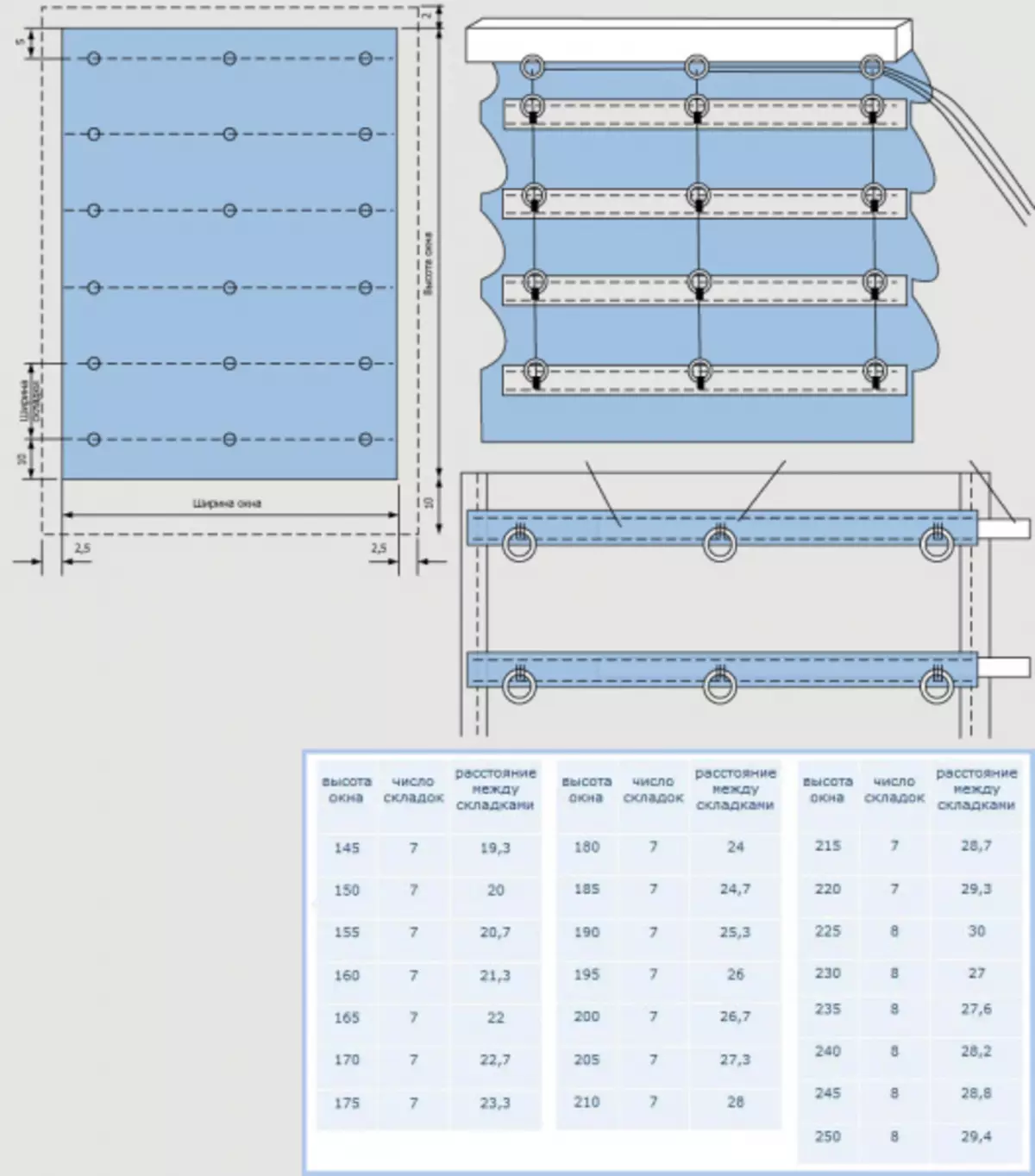
The diagram of selecting the optimal number of fixtures of the Roman curtains, depending on the height of the window opening.
It is pushed by pins, after which the ribbons are sewn in those places where marks for folds were previously made. When the pockets for the curtains are ready, you need to take the rails, gently cut to the required length. They are inserted into the prepared pockets. After all the rails are inserted into the pockets, it is necessary to proceed to the sewing of the rings. On the canvas for one fold, it is necessary to take 3 rings, one is sewn in the middle, and two others around the edges with a 5 cm of retreat from the edge of the fabric.
Cord cord must be cut into 3 equal parts. One cord is tied to the bottom ring on the left, after which it is passed through all the rings of this side. The remaining cords are drawn through rings in the same way. Over the window frame, you must fasten the mechanism for lifting the curtains, it is usually a simple wooden plank, but you can also purchase a special cornice, securing Roman blinds on it. Now we need to try using the finished canvas to make sure that the curtain length is exactly what was planned. If there is a need, then it can be shortwood. If the length required a little more, then the lower part can be decorated with lace, beads, beautiful brushes. The canvas itself to the eaves is best attached to a special velcro tape. This will allow, if necessary, it is easy to remove the fabric, then fasten it back.
For windows, you can simulate various versions of the curtains, but are very popular with such as Roman shutters. They differ simplicity. Before sewing it is important to correctly determine the quantity and location of the folds, choose a suitable tissue. Otherwise, the curtain simply will not be draped, and its appearance will not work so attractive as it was planned.
